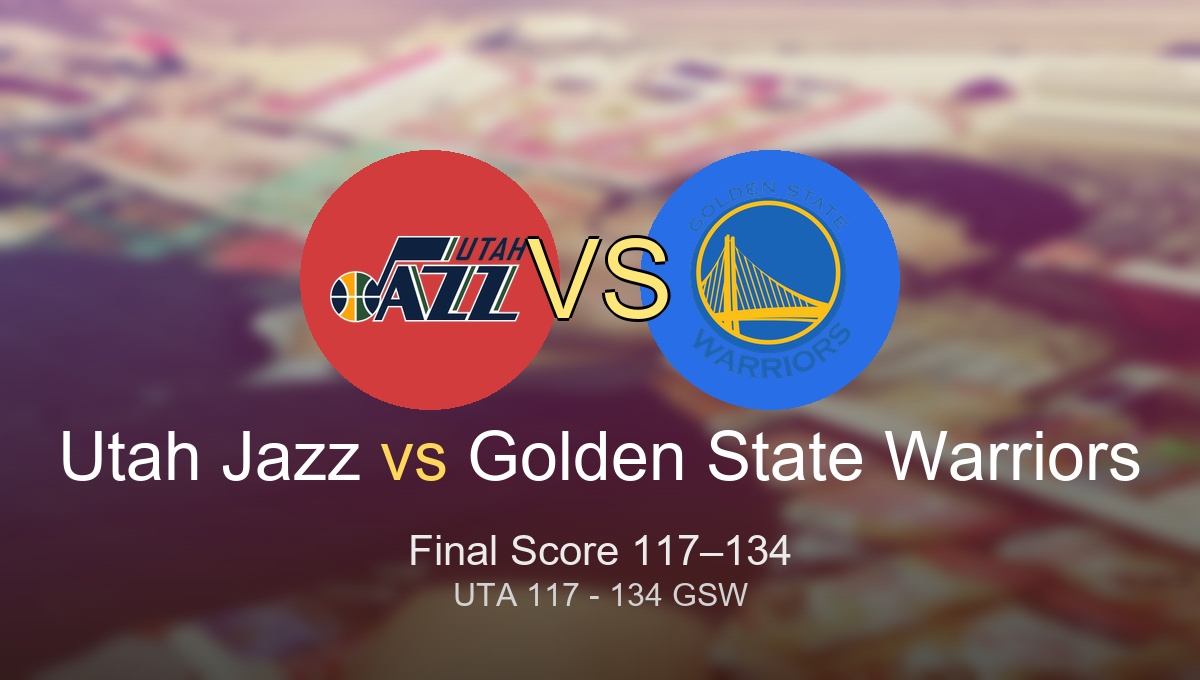
May in the NBA. Teams are battered, the benches are short, and even the smallest mistake can cost someone immortality. Every year, how NBA playoffs seeding works determines who has the inside track to glory—and who faces an uphill battle. It’s not just about winning games. It’s about how the bracket falls, who you face, and where you play. In a league where legacies and dynasties are built in springtime, seeding is more than numbers. It’s the geometry of hope, heartbreak, and history.
Players fight all year for home court. Coaches ride the standings like stock tickers. And fans check their team’s “magic number” as if it were a lottery ticket. Seeding doesn’t just decide who plays whom; it can define the next NBA champion.
Understanding how NBA playoffs seeding works strips away the confusion and gets to the heart of why regular season nights in Memphis or Minnesota genuinely matter. Let’s pull back the curtain on the process and the moments that shape our favorite playoff stories.
Context: Why This Matters
Try saying “rings are all that count” in an NBA barbershop and you’ll get a quick debate. Talent wins games. Seeding wins championships. Impact builds legacies. Some call the regular season a grind; others know it’s a slow seeding battle, setting up a gauntlet through the playoffs.
Remember the 1995 Rockets? Sixth seed, no one believed. Or the 2007 Warriors, who as an eighth seed gave birth to “We Believe” and toppled the first seed Mavs. But most years, seeding is destiny: higher seeds get home court, an easier first-round draw, a path paved for stars to rise.
It’s the difference between a parade and an early vacation. That’s why seeding arguments—upsets, tiebreakers, play-ins—still light up group texts all spring long.
Methodology
To unpack how NBA playoffs seeding works, we break down the big turning points—iconic games, new formats, and why the regular season is still relevant. Here’s how we built this list:
- Each item focuses on a specific moment, rule, or process that shapes playoff seeding.
- We balance:
- Championship Impact: 40%
- Longevity/Consistency: 30%
- League Impact/Innovation: 30%
- Data and decisions are shaped by official sources like NBA.com, deep league stats from Basketball-Reference, and the evolving consensus across national media and fans.
- We consider the ripple effect: how each element changed the path to a title.
Want more numbers? Check out the official NBA Playoffs section or Hall of Fame Playoff Moments.
The Seeds That Changed Everything: 10 Key Moments & Rules
1. The Birth of the Play-In Tournament (2020) – Playoff Chaos Arrives
August 2020. The Orlando Bubble. NBA fans witness the first modern play-in game as Portland’s Damian Lillard faces off against Ja Morant’s Memphis Grizzlies. It’s tense, unpredictable—an eighth seed has to defend its spot, live.
This wasn’t just a pandemic experiment; it was the beginning of a fundamental shift. Suddenly, the 7th through 10th seeds mattered more than ever. The play-in added stress, urgency, and unpredictability to the end of the season. Now, seeds 7–10 in each conference play for the final two playoff spots, making late-season games fierce and fun again.
LeBron called the play-in “the best thing for the league.” Critics and fans can’t stop arguing about it.
Key facts:
– First used: 2020 Bubble, formalized in 2021
– Teams seeded 7–10 compete for the last playoff spots
– Single/double-elimination format adds unpredictability
Authoritative sources:
NBA.com – Play-In Explained
Basketball Reference – Playoff Index
🧵 On X
https://x.com/search?q=NBA%20play-in%20tournament&src=typed_query
2. The Classic 1–8 Conference Seeding, Established in 1984
Picture 1984. Magic vs. Bird, East vs. West. For the first time, each conference’s eight teams are ranked 1 through 8 by regular season record. The league says goodbye to divisional quirks. The modern NBA bracket—the foundation for all playoff arguments—arrives.
Since then, seeding shapes every shot and storyline: top seeds get home court, easiest early matchups, and a statistical edge (over 70% of NBA champions since 1984 have been top-2 seeds). It’s why every game from November matters.
“If you want to win, aim for a top-two seed,” former coach Jeff Van Gundy once joked.
Key facts:
– Introduced 1–8 seeding by record in each conference
– Rewards regular season success
– Home court assigned to higher seed
Authoritative sources:
NBA History – Playoffs
ESPN – NBA Playoff Format Explained
🧵 On X
https://x.com/search?q=NBA%20playoff%20seeding%20history&src=typed_query
3. “We Believe”: Warriors Upset #1 Mavs as the 8th Seed (2007)
Oracle Arena, spring 2007. The 8-seed Golden State Warriors, led by Baron Davis, upend the 67-win Dallas Mavericks in a raucous, unforgettable first-round upset. Suddenly, the bracket isn’t fate; seeds matter, but nothing is inevitable.
Fans across the country realized that while seeding gives odds, the payoff is in the chaos. Since then, every eighth seed has carried hope, every one seed, a touch of dread.
“Anything can happen in the playoffs. We proved that, man,” Davis smiled years later.
Key facts:
– Warriors: first 8-seed to beat a best-of-7 #1 (2007)
– Created the “We Believe” legend
– Made playoff upsets part of NBA culture
Authoritative sources:
Basketball Reference – 2007 NBA Playoffs
ESPN – ‘We Believe’ Oral History
🧵 On X
https://x.com/search?q=We%20Believe%20Warriors%20Mavericks&src=typed_query
4. The 16-Team Era: 1977’s Expansion Shifts the Bracket
Before 1977, the playoff landscape was narrower. With merger and expansion, 1977 introduced the modern idea of 16 teams making the postseason. More franchises meant more paths to a championship and more late-season drama. Margins for error shrank—sneaking in as a lower seed suddenly became possible.
The playoff seed grind expanded to more cities, more rosters, and more careers on the line. The democratization of dreams, all on the basis of regular-season seed.
Key facts:
– 16 teams qualify, 8 per conference
– Expansion made seeding races wilder, more inclusive
– Allowed for rise of underdog runs and wilder bracket scenarios
Authoritative sources:
NBA.com – Historical Format
Basketball Reference – Yearly Playoff Results
🧵 On X
https://x.com/search?q=NBA%2016%20team%20playoffs&src=typed_query
5. The Division Winner Debate (2005–2015): Flawed Prioritization
Flash back to 2011. The Spurs are third overall in the West by win total—but division rules vault them to the #2 seed. Fans groan. The NBA’s decade-long experiment giving division winners top-3 seeds (even if their records didn’t warrant it) led to lopsided brackets and sometimes unfair home court.
After a string of mismatched first round series, the NBA reverted to pure record-based seeding. Sometimes, tradition has to lose out to fairness.
“It didn’t make sense. The best should play the worst, not based on geography,” a longtime NBA observer told The Athletic.
Key facts:
– 2005–2015: Division winners seeded top-3, regardless of record
– Led to controversial mismatches
– 2016: NBA switched back to pure record-based seeding
Authoritative sources:
ESPN – NBA Seed Rule Change
NBA.com – Playoff Seeding
🧵 On X
https://x.com/search?q=NBA%20division%20winner%20seeding&src=typed_query
6. Tiebreakers, Head-to-Head, and Wild Finales
Game 82. Two teams finish with the same record. Now what? The NBA’s tiebreakers—starting with head-to-head matchups, then division records, then conference records—have broken many playoff dreams and built others.
Some years, the line between playing the Bucks or the Celtics (or even making the playoffs at all) comes down to a random Wednesday in February. These tiebreakers have kept the regular season high-stakes from game 1 to game 82.
“Every moment matters. You never want to lose the tiebreaker,” Chris Paul once reflected.
Key facts:
– First tiebreaker: head-to-head record
– Then: division winner, then conference record, then point differential
– Keeps late season games meaningful
Authoritative sources:
NBA.com – Tie-Breaking Procedures
Basketball Reference – Standings and Tiebreakers
🧵 On X
https://x.com/search?q=NBA%20playoff%20tiebreaker&src=typed_query
7. Home Court Advantage—Why the #1 Seed Really Matters
2016, the Warriors go 39-2 at Oracle in the regular season. Their reward? Home court through the playoffs—a historic edge (home teams win over 65% of playoff games). The last game of the Finals, Game 7, is at their house. Home crowds, sleeping in your bed, and that familiar rim: these elements reward regular season grind.
Most champions have risen from the top two seeds—and that’s not a coincidence.
“You want that Game 7 in your building,” Steph Curry said.
Key facts:
– Higher seed gets home court every series
– Home teams win much more in playoffs
– Can swing a Finals (see 2016 Cavs vs. Warriors)
Authoritative sources:
NBA.com – Playoff Home Court
Basketball Reference – Playoff Series Data
🧵 On X
https://x.com/search?q=NBA%20playoff%20home%20court%20advantage&src=typed_query
8. Conference Split: East vs. West—No Cross-Bracket Until the Finals
May 1998. Indiana Pacers fans dream of a Finals run, but they can’t face the Bulls until both reach the championship. The NBA’s conference split—East and West—means all playoff matchups are within conference until the championship.
This tradition creates dynasties and regional rivalries, sometimes leading to grumbling that the “real Finals” took place a round early. The conference system locks in plenty of heartbreak and empire-building before the two best finally meet.
Key facts:
– East and West split until NBA Finals
– Ensures balanced brackets for TV and tradition
– Shapes historical rivalries and Finals matchups
Authoritative sources:
NBA.com – Playoff History
Basketball Reference – NBA Playoff Brackets
🧵 On X
https://x.com/search?q=NBA%20playoff%20conference%20bracket&src=typed_query
9. Upsets and the Cinderella Effect—Seeds Aren’t Everything
1999, Madison Square Garden. The 8-seed Knicks topple the Miami Heat, then race all the way to the Finals. The “Cinderella” story is now baked into the DNA of NBA seeding. It’s rare in the NBA, but when it happens, fans never forget it.
Seeds matter, but talent, health, and a little madness can reshape history in a few short weeks. No bracket is totally safe.
“Just get in. Then it’s anyone’s series,” said Allan Houston about the run.
Key facts:
– 8-seeds have reached the Finals (Knicks, 1999)
– Upsets fuel underdog hopes every spring
– Proves seeding helps—but never guarantees—a title
Authoritative sources:
ESPN – Knicks’ Cinderella Run
Basketball Reference – 1999 NBA Playoffs
🧵 On X
https://x.com/search?q=Knicks%20Heat%201999%20NBA%20playoffs&src=typed_query
10. Overtime Tweaks: Future of Seeding—In-Season Tournaments and Reseeding
December 2023. NBA courts are painted with mid-season tournament logos. The league’s new in-season tournament and persistent talk of reseeding after every round is reshaping seeding strategy. Could the future throw out conferences? Should best teams, period, make the playoffs?
Nothing’s set yet—but the tension between tradition and innovation pulses louder than ever. The conversation now: How will today’s tweaks shape tomorrow’s seed battles?
“We’re open to new ideas, but history still matters,” Commissioner Adam Silver told NBA Today.
Key facts:
– In-season tournament debuted 2023–24, shaping playoff approach
– Proposals include 1–16 global seeding, post-round reseeding
– Future changes could overhaul playoff paths
Authoritative sources:
NBA.com – In-Season Tournament
ESPN – Playoff Format Ideas
🧵 On X
https://x.com/search?q=NBA%20in-season%20tournament%20reseeding&src=typed_query
What Comes Next
NBA seeding has always been the heartbeat beneath the highlights. The moments and rules on this list show that shaping the playoff bracket is never just math—it’s about possibility, rules, rivalry, and reinvention.
As new stars rise and formats shift again, seeding will continue to define who gets remembered and who goes home early. Could an in-season tournament winner change playoff positioning? Will the NBA finally adopt a 1–16 seeding regardless of conference? These conversations aren’t going away.
The one constant: fans, players, and execs all know that behind every ring is a season full of tiny seeding dramas. The league’s history—and its future—runs through the bracket.



